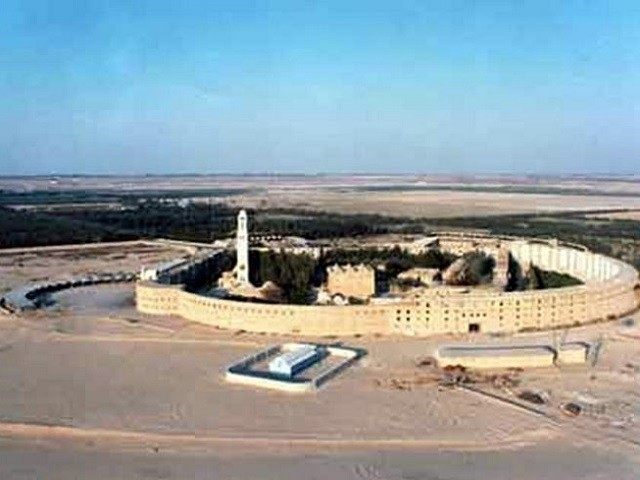To protect a precious archaeological area that stretches around a church dating back to the fourth century AD, a group of Coptic monks from the Monastery of Saint Macarius have staged a resistance to a road-building project, going so far as to lie down in front of approaching bulldozers.
The Egyptian government is moving forward on a project to build a road connecting the city of Fayoum to an oasis area, passing through the territory around the ancient Coptic Monastery of St. Macarius, home to dozens of monks. The project also threatens the water supply of the monastery and some cultivated areas belonging to it.
To protest the building project, the monks have practiced nonviolent resistance, lying in the path of bulldozers working on the project. According to reports, workers approached the monastery lands shouting, “Allahu Akbar!”
The monastery is located in Wadi el-Natrun, the ancient Scetes, 57 miles southwest of Cairo, on the western side of the way of the wilderness toward Alexandria.
It was founded in 360 AD by St. Macarius the Egyptian, who was the spiritual father to more than four thousand monks of different nationalities—Egyptians, Greeks, Ethiopians, Armenians, Nubians, Asians, Palestinians, Italians, Gauls, and Spaniards.
The monastery claims to be built on the site of the tombs of St. John the Baptist and the prophet Elisha, which were supposedly discovered below the northern wall of the church during a restoration. The monks claim that location of the crypts would find corroboration in manuscripts from the 11th and 16th centuries found in the library of the monastery.
This confrontation between the monks and the workers is just the latest incident in a long dispute which arose around the road project. The monks already submitted various alternative projects that would allow for the preservation of the historical and natural heritage threatened by the route of the new road.
The Coptic church has also established an ad hoc committee to encourage the search for alternative solutions, working together with the Ministry of Antiquities, which also expressed its opposition to the project and recommended full protection of the archaeological area.
The monastery has been continuously inhabited by monks since its construction in the fourth century.
Follow Thomas D. Williams on Twitter @tdwilliamsrome.

COMMENTS
Please let us know if you're having issues with commenting.